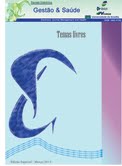Síndrome metabólico y actividad física en inmigrantes chilenos residentes en Río Gallegos, Santa Cruz, Argentina
Abstract
Estudiar la frecuencia de síndrome metabólico, sus componentes y su relación con la actividad física, en inmigrantes chilenos residentes en Río Gallegos, Santa Cruz, Argentina.Se entrevistaron a 314 (165 mujeres y 149 hombres) inmigrantes residentes en Río Gallegos en 2010, sanos según registros en historias clínicas previas (2000). Se determinaron antropometría y control de tensión arterial; análisis de sangre en ayunas para medir las concentraciones de glucosa, triglicéridos y colesterol transportado por lipoproteínas de alta densidad. El síndrome metabólico se estableció según los criterios del NCEPATPIII.El síndrome metabólico tuvo una prevalencia total de 28,9% (IC95%: 23,9-34). Más frecuente en mujeres (32,1%) que en hombres (25,5%). Las prevalencias de sus componentes fueron: obesidad abdominal 56%, colesterol de HDL disminuido 48,3%, triglicéridos aumentados 68,1%, hipertensión arterial 46,1% y alteraciones de la glucosa 72,5%. La actividad física insuficiente total fue de 66,2% (IC95%: 60,1-71,5). Los inmigrantes presentaron más probabilidad de síndrome metabólico al residir 15 años o más (β: 5,74, IC 95%:2,81-11,73; p=0,000) y al realizar actividad física insuficiente (β: 3,36, IC95%:1,57-7,21; p=0,002). La prevalencia de síndrome metabólico en inmigrantes chilenos residentes en Río Gallegos es mayor que la reportada en Argentina y Chile.
Palabras clave: Migración internacional. Factores de riesgo. Obesidad abdominal. Chile. Argentina.
Downloads
Downloads
Published
How to Cite
Issue
Section
License
I declare that this article is original and has not been submitted for publication in any other national or international journal, either in whole or in part. I further declare that once published in the Electronic Journal Management and Health published by the University of Brasília, it will never be submitted by me or any of the other coauthors to any other means of scientific dissemination.
Through this instrument, in my name and in the name of the other coauthors, may I soon copy the copyright of the article to Electronic Journal Management and Health and declare that I am aware that failure to comply with this commitment will subject the violator to penalties and penalties Law of Protection of Rights Authorities (Nº9609, of 02/19/98).







